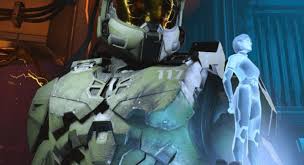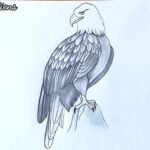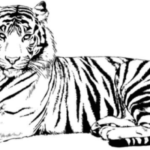When Halo: Combat Evolved was released in 2001, it revolutionized the gaming world with its dynamic sci-fi universe and captivating multiplayer modes. By 2003, the game had a thriving community, and its symbols—known as game icons and banners—played a significant role in engaging players. These visual elements were integral to gameplay, providing important cues, such as health indicators, weapon status, and team affiliations.
Table of Contents
Game icons in Halo serve as representations of key in-game elements like weapons, vehicles, and characters. For instance, when a player switches to a sniper rifle or a Warthog, the game uses icons to help identify the weapon or vehicle quickly. Banners, on the other hand, became popular for multiplayer modes, where teams or players used them to signify achievements or team identities, making them more than just visual embellishments—they added layers of meaning and strategy to the game.
What Are Game Icons and BannersIcons are small, graphic symbols that represent weapons, vehicles, or status indicators. For example, a player’s shield status is represented by a blue bar icon, and different weapons, like the energy sword or assault rifle, are shown through corresponding symbols. Banners, however, are larger graphics that can represent entire teams or groups in multiplayer games. They also highlight achievements, events, or special rewards players receive during gameplay.
Icons and banners were not just practical; they also contributed to the overall aesthetic and immersive experience of the Halo universe. These visual markers helped players navigate the fast-paced gameplay, while simultaneously enhancing the story-driven aspects of the game by highlighting key factions, such as the United Nations Space Command (UNSC) or the Covenant.
Iconic Halo (2003) Symbols: A Closer Look
In halo (2003) game icons banners, several symbols have become synonymous with the game’s legacy, helping to establish a strong connection between the players and the game world. One of the most iconic symbols is the Master Chief helmet. This futuristic, battle-worn helmet has become a key visual identifier of the protagonist, symbolizing resilience, strength, and the mystery surrounding the Master Chief. Over the years, the helmet has transcended the game, becoming a symbol of the entire Halo franchise. Whether on promotional material or within the game itself, the helmet serves as a rallying point for players, reminding them of the intense battles and storylines they’ve experienced.
Another critical symbol is the UNSC emblem—the mark of humanity’s military power in the game’s universe. This logo represents the strength and unity of Earth’s forces as they battle against alien threats. On the opposite side, you have the Covenant’s symbol, a design that conveys the alien alliance’s advanced technology and menacing presence. The UNSC and Covenant symbols are often seen in-game as banners, icons, and on vehicles or bases, representing the factions at war.
These symbols do more than enhance the visual experience—they deepen the storytelling. Each icon, whether it’s the Warthog vehicle or the Needler weapon, provides players with a sense of familiarity and connection to the game’s elements. Every time a player sees these symbols, they’re reminded of the tactical gameplay, unforgettable battles, and the deep lore that makes Halo so iconic.
The Evolution of halo (2003) game icons banners and Banners
The design of game icons and banners in Halo has evolved significantly over time, particularly as gaming technology improved. In halo (2003) game icons banners, the initial designs were relatively simple but highly effective. Icons had to be instantly recognizable due to the fast-paced gameplay, meaning that clarity was prioritized over complexity. Early icons were functional, using basic shapes and colors to convey meaning. However, even in their simplicity, these icons carried weight—players could instantly associate a small icon with a powerful weapon or a vital piece of equipment.
As the Halo franchise expanded, the graphics and detail in the game improved. By Halo 2 and beyond, icons and banners became more elaborate, reflecting advancements in game design and technology. The introduction of high-definition graphics allowed developers to add more intricate details to the icons, creating a more immersive experience for players. For example, icons representing vehicles like the Warthog or weapons such as the plasma pistol became more visually detailed, with textures and shading that made them stand out more vividly.
This evolution also extended to banners, which started as simple team identifiers in multiplayer modes. Over time, they became more personalized and complex, allowing players to represent their individual styles or teams in greater detail. This added customization helped deepen player engagement, as gamers could now create their own visual identity within the game. As new technologies, such as augmented reality (AR), continue to emerge, the design and interaction with icons and banners in the Halo universe will likely become even more immersive.
Custom Halo (2003) Game Banners: Fan Art and Creativity
In the world of halo (2003) game icons banners, fan creativity has played an essential role in keeping the game’s visual legacy alive. While the official icons and banners are iconic, the community has taken things a step further, creating their own custom designs to express their connection with the game. This fan-driven creativity has led to an entire subculture of fan art, where players create custom banners and icons for their gaming profiles, communities, or to showcase their love for specific aspects of the game.
One reason fans create custom banners is for decorative purposes. Many players use these banners to personalize their gaming setups, online profiles, or even physical spaces, like their rooms or game stations. These visual elements serve not just as decorations but as symbols of pride, showing the world their connection to the Halo universe. For example, some fans design banners that focus on specific in-game factions, like the UNSC or Covenant, while others may choose to highlight memorable battles or iconic weapons.
Another aspect of custom banner creation is the strong sense of community engagement. Online forums, subreddits, and social media platforms dedicated to Halo are flooded with fan-made icons and banners. These spaces offer fans a chance to share their work, exchange ideas, and even collaborate on designs. In this way, custom banners and icons are more than just images—they represent a creative outlet and a way for fans to connect with others who share their passion for the game.
Many fans even offer custom banner creation services, where they design personalized Halo banners for other players. These services allow users to select specific elements from the game—such as iconic weapons, vehicles, or locations—and combine them into a unique design that represents their gameplay style or achievements. The availability of these custom services helps ensure that the halo (2003) game icons banners community remains vibrant and creatively engaged even years after the game’s initial release.
The Impact of Halo (2003) Game Icons and Banners on Gaming Culture
The influence of halo (2003) game icons banners game icons banners extends far beyond the game itself. These visual elements have had a profound impact on the broader gaming culture, shaping how games are designed and how players interact with visual content. One of the most significant contributions of these icons and banners is their role in creating a universal visual language in gaming. Just as players can recognize a health bar or ammo counter across multiple games, the symbols from Halo—such as the Master Chief helmet or UNSC logo—have become instantly recognizable, even to non-players.
Many other games, particularly in the sci-fi and shooter genres, have adopted similar design principles. For instance, franchises like Call of Duty and Overwatch have integrated iconography into their games in ways that mirror Halo’s use of icons and banners. These icons are designed to be clear and simple, allowing players to absorb information quickly without disrupting the gameplay. This approach has become a standard in the gaming industry, demonstrating the lasting impact that halo (2003) game icons banners has had on game design.
Moreover, the rise of eSports and competitive gaming has further cemented the importance of banners in establishing team identity. In the professional gaming scene, team logos and banners have become an essential part of branding. Teams participating in Halo tournaments, for instance, often design custom banners that reflect their identity and help fans recognize them during competitions. This trend, which started with simple team banners in Halo’s multiplayer modes, has now evolved into a full-blown industry, where visual branding is key to a team’s success and popularity.
The legacy of halo (2003) game icons banners also lives on through fan-made content and collectibles. The nostalgia attached to these symbols has made them popular among collectors, who seek out posters, artwork, and merchandise featuring the iconic designs from the original game. Whether it’s a detailed Master Chief helmet sculpture or a replica of the Covenant logo, these items serve as a testament to the lasting cultural impact of halo (2003) game icons banners.
Where to Find halo (2003) game icons bannersToday
For fans who want to explore or collect halo (2003) game icons banners, there are several ways to access these iconic visuals. Online communities are one of the best places to start. Websites like Reddit, Halo forums, and social media groups dedicated to the Halo franchise are rich sources of fan-made banners and icons. These communities are often welcoming and encourage fans to share their creations, exchange ideas, and celebrate the game together.
In addition to community-driven platforms, several gaming websites offer downloadable content related to Halo icons and banners. These sites often provide customizable templates, allowing players to create their own unique designs using elements from the game. For those looking for a more personal touch, there are also custom banner creation services available online. These services allow fans to work with professional designers to create personalized banners that feature their favorite elements from the game, such as specific characters, vehicles, or weapons.
FAQs About halo (2003) game icons banners
What are halo (2003) game icons banners?
halo (2003) game icons banners are visual symbols used to represent key in-game elements like weapons, vehicles, and factions. They are also used to signify teams and achievements in multiplayer modes.
Why are halo (2003) game icons banners significant?
These icons and banners have become integral to the game’s identity, providing players with a sense of connection to the game world while enhancing gameplay mechanics. They also hold nostalgic value for long-time fans of the franchise.
Where can I find custom Halo (2003) banners?
You can find custom banners in online communities, on gaming websites, or through banner creation services that offer personalized designs based on your favorite aspects of the game.
conclusion
In conclusion, halo (2003) game icons banner have played a pivotal role in defining the visual identity of one of the most beloved gaming franchises in history. From the iconic Master Chief helmet to the dynamic banners used in multiplayer, these visual elements have not only enhanced gameplay but have also influenced gaming culture, design, and community creativity. Their evolution from simple functional graphics to detailed, personalized art highlights the lasting impact of Halo on both its fans and the broader gaming industry. Whether for nostalgia, customization, or community engagement, these symbols remain a vital part of the Halo legacy, connecting generations of players to an epic sci-fi universe.
Read More:drawing:znnauq4mcdm= dog







